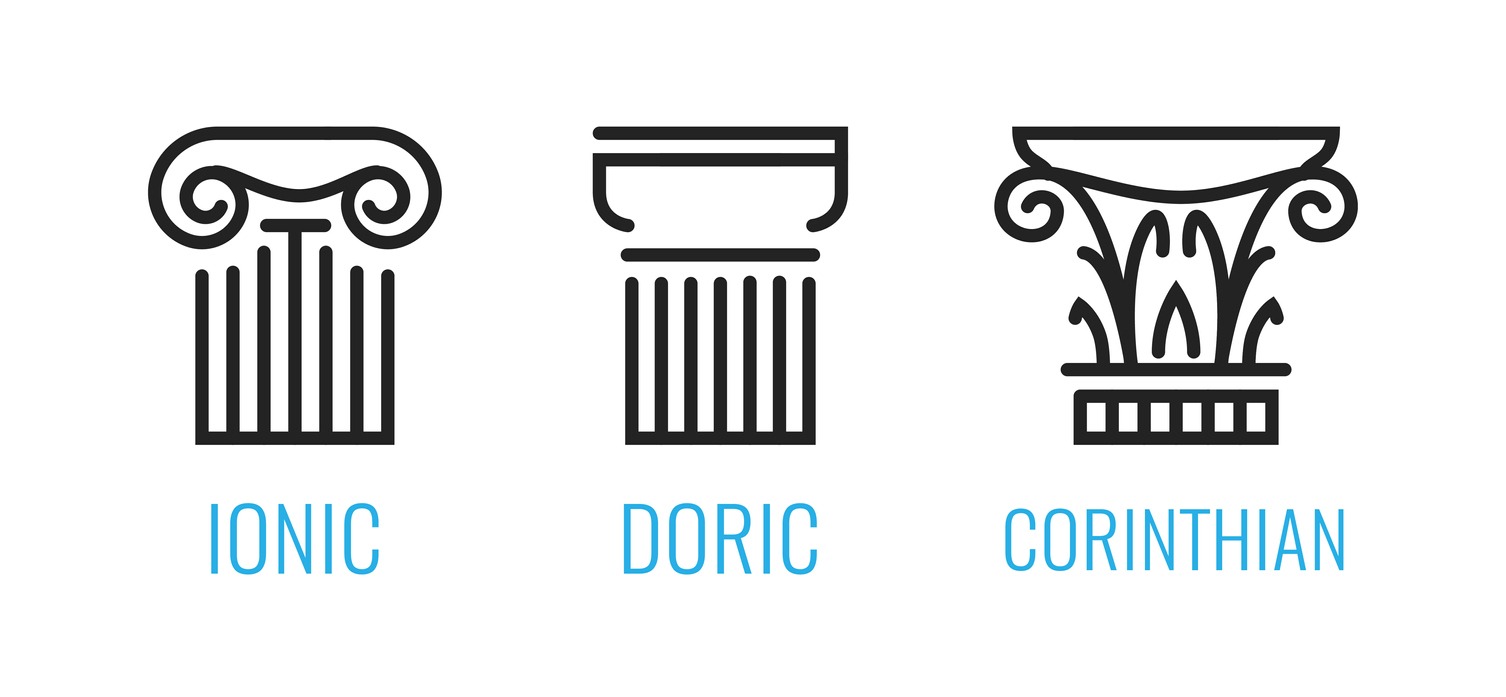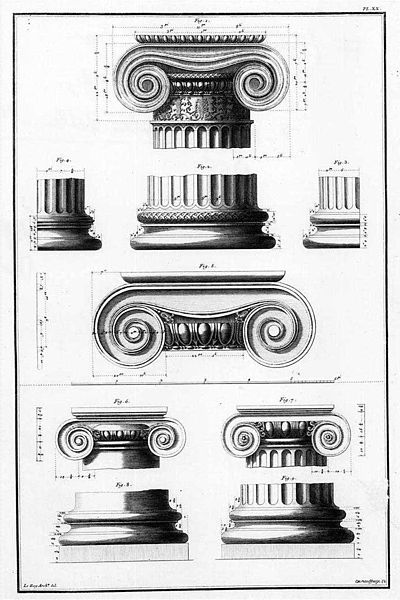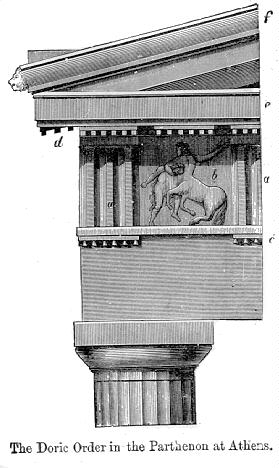The architectural brilliance of ancient Greece has left an indelible mark on the world of design and construction. One of the most enduring legacies of Greek architecture is the iconic Greek columns, known for their aesthetic appeal, structural functionality, and symbolic significance. These columns are not just structural elements; they are storytellers of ancient artistry and cultural values. Let’s delve into the three fundamental types of Greek columns – Doric, Ionic, and Corinthian – each boasting its distinct style and historical importance.
These three types of columns originated in Greece, which was a vital part of the structures in the ancient Greek civilization. It all started roughly in 500 BC during the Classical era of architecture. During this period, the Classical order of architecture is the primary basis of ancient architects. These styles made a significant impact on various structures throughout history. Until today, the neoclassical style of Greek columns continues to be an influence on different structures all over the globe.
These columns are commonly present in porches of a house, mansion, banks, memorials, schools, and many other buildings that have a classical style. Different architectural orders would best suit different structures, such as the Corinthian column would work best in high-class mansions and temples because of its sophisticated design. The Doric column looks beautiful in porches, entrance facades, and the like. Ionic columns are often used in high structures because of its tall characteristics.
In this article, we will look into each Greek column type, what parts does a column have, and what are their attributes.
Parts of a Column
The Greek architectural orders have different elements, including the entablature, frieze, cornice, column, etc. These elements are what make up the entirety of a Greek order. The main distinguishing factor of an architectural order is the column because it is the most visible element.
A column has three parts – mainly the base, shaft, and capital. Each of these parts plays an essential role in keeping the column stable, durable, and unique. Starting from the bottom of the column, we have the base, which supports the shaft of the column. The shaft is the body of the column, which usually is surrounded by flutes. Then we have the capital at the top; this is probably the most distinct part of the column to distinguish the difference from each other. Each column has a different feature, which we will elaborate further in the article.
Now we know the parts of a column, let’s look into each of the three types of Greek columns.
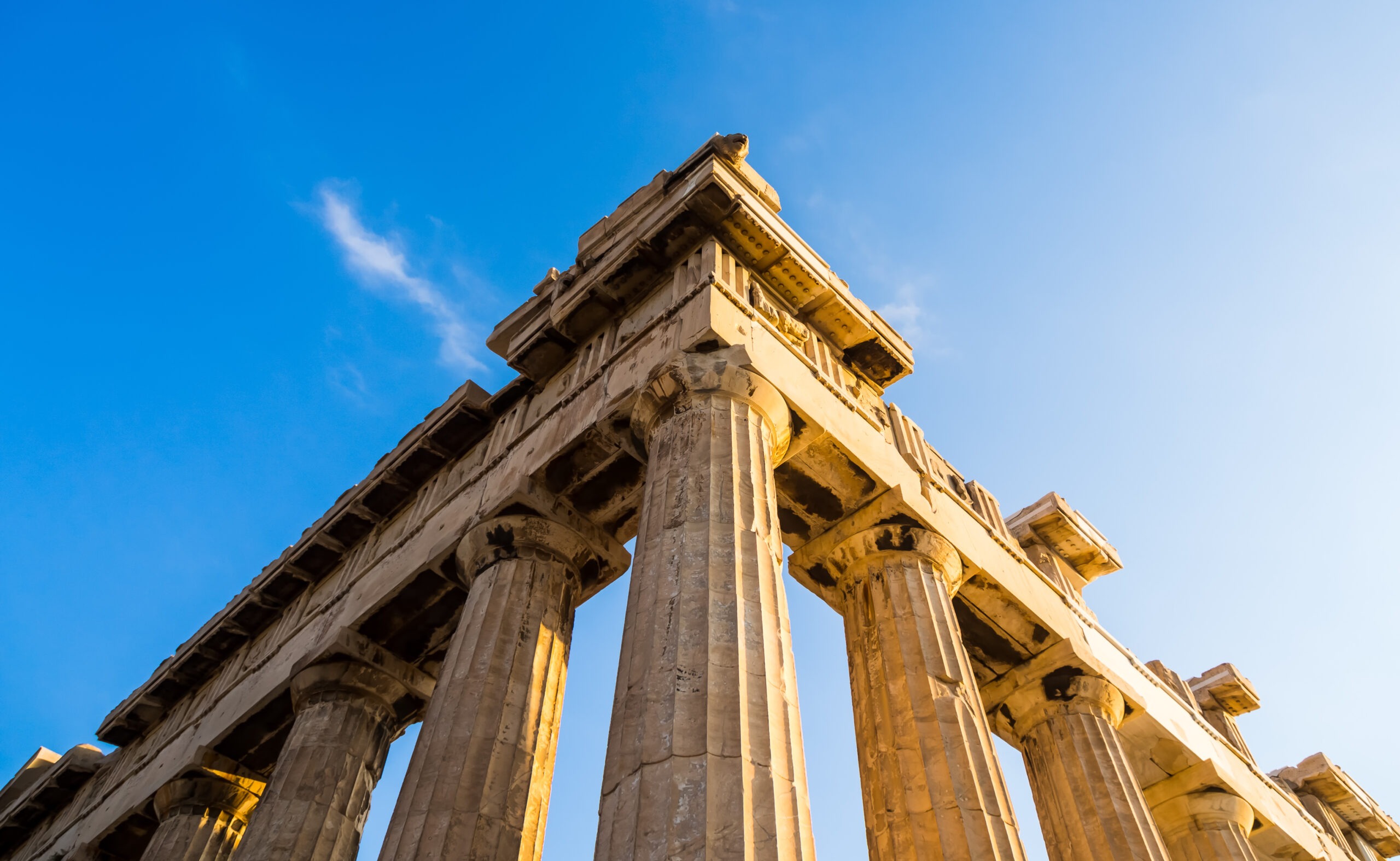
Doric Column
The Doric column, originating from ancient Greece, is one of the earliest and most fundamental styles in classical architecture. It is characterized by a robust and straightforward design, reflecting the ideals of strength and functionality prevalent in Greek mainland architecture. In addition to learning about the Greek columns, learn about its difference from the Egyptian Pillars. Visit Exploring the Elegance of Antiquity – A Comparative Study of Greek Columns and Egyptian Pillars.
Design Characteristics:
- Simplicity: The Doric column is noted for its plain, unadorned design. Unlike the later Ionic and Corinthian styles, the Doric column lacks elaborate decorative elements, embodying a sense of purity and simplicity.
- Capital: The top of the Doric column, known as the capital, is very simple compared to other orders. It consists of a circular stone called the echinus, which is flat and plain, and a square slab called the abacus.
- Shaft: The shaft of the Doric column is typically fluted, having 20 concave grooves running vertically along its length. These flutes provide a play of light and shadow on the column surface, adding subtle visual interest to its sturdy form.
- Proportions: Doric columns are generally shorter and thicker in comparison to the later Ionic and Corinthian columns. This stoutness gives them a sense of strength and sturdiness.
- Entasis: A subtle feature of Doric columns is entasis, a slight bulging or swelling in the middle of the shaft. This optical refinement counters the illusion of concavity that straight sides can produce in massive structures.
- No Base: Unlike Ionic and Corinthian columns, Doric columns typically stand directly on the structure’s floor (the stylobate) without a separate base. This direct placement contributes to the column’s feeling of solidity and groundedness.
Symbolic Significance: The Doric column is often associated with masculinity and strength, reflecting the values and aesthetics of the Dorian Greeks. Its sturdy and straightforward design is seen as a reflection of the practical and no-nonsense approach of its creators.
Historical Context: The Doric order originated in the western Dorian region of Greece and was prominently used in mainland Greece and southern Italy. The Parthenon in Athens, a temple dedicated to the goddess Athena, is the most famous example of Doric architecture and showcases the order’s dignified simplicity.
Legacy: The Doric column set a standard for Greek and later Roman architecture, influencing subsequent architectural styles. Its emphasis on proportion, simplicity, and structural integrity has made it a timeless element in architecture, still admired and utilized in modern design for its symbolic strength and aesthetic purity. Explore more of Greek columns. Visit Exploring the Art and Symbolism of Metopes and Triglyphs in Doric Architecture
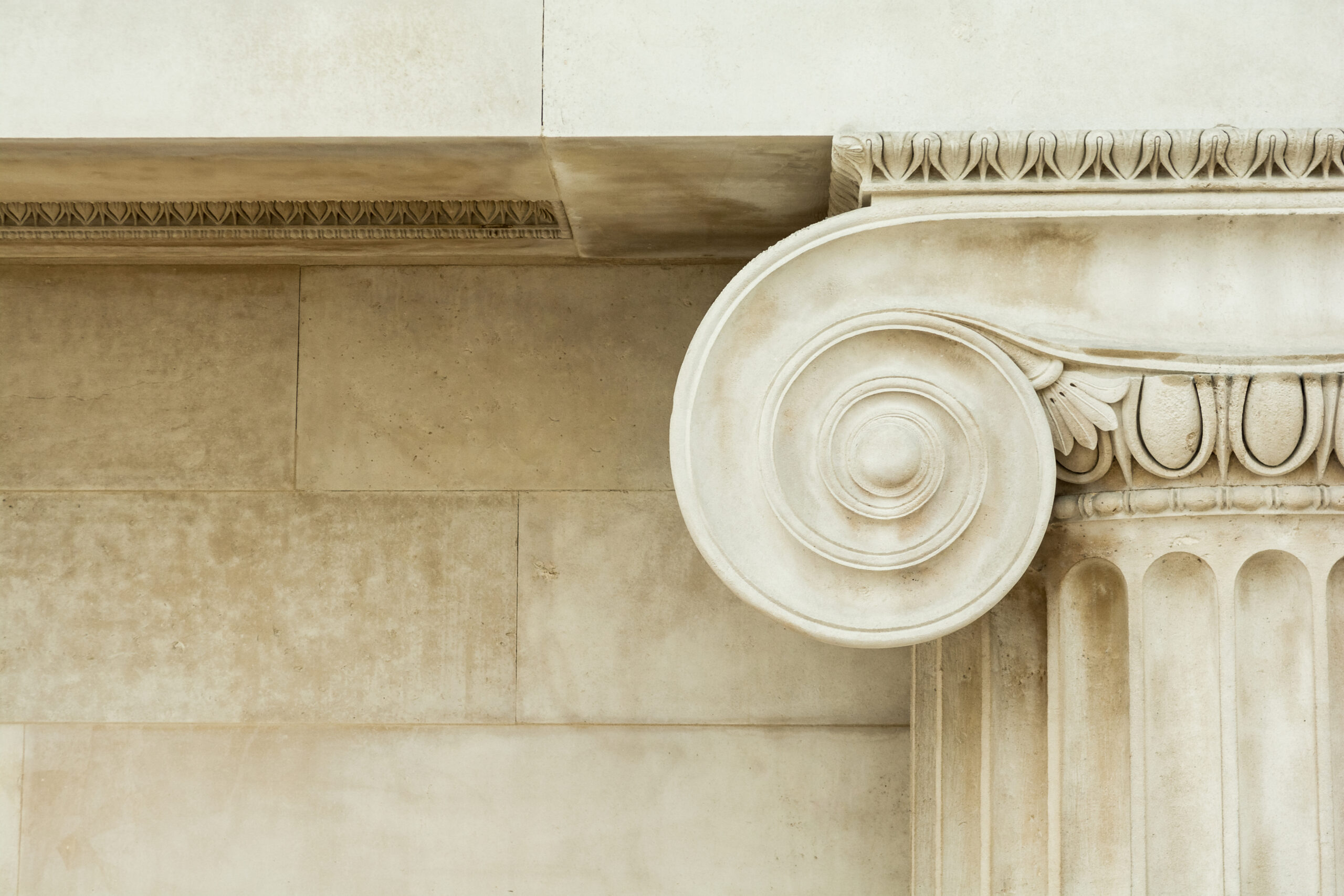
Ionic Column
The Ionic column is one of the three classical orders of ancient Greek architecture, known for its elegance, ornamentation, and slender proportions. Developed in the mid-6th century BCE in the eastern Greek islands, the Ionic order represents a significant departure from the simplicity of the Doric style.
Design Characteristics:
- Capital: The most distinctive feature of the Ionic column is its capital, adorned with volutes or spiral scrolls. These volutes give the Ionic columns a sense of rhythm and movement, contrasting the static nature of the Doric order.
- Proportions: Ionic columns are generally taller and more slender than Doric columns. This slenderness is often enhanced by a higher column shaft, making the Ionic columns appear more graceful and less robust than their Doric counterparts.
- Flutes: The shaft of an Ionic column is fluted like the Doric order, but typically with 24 flutes, which are deeper and more pronounced. These flutes are separated by narrow, flat bands, adding to the column’s overall elegance.
- Base: Unlike Doric columns, Ionic columns are set upon a base. This base typically consists of stacked rings of molding, adding to the column’s height and elegance.
- Entablature: The Ionic entablature, the structure supported by the columns, is usually more richly decorated than that of the Doric order. It often includes a frieze with continuous sculptural relief, unlike the Doric’s triglyphs and metopes.
Symbolic Significance and Origins: The Ionic style is often associated with sophistication and delicacy, reflecting the cultural and artistic inclinations of the Ionian Greeks. The origins of the Ionic column are traced back to the eastern Greek islands and the coast of Asia Minor (present-day Turkey), where influences from neighboring cultures contributed to its more decorative characteristics.
Historical Examples: One of the best examples of Ionic architecture is the Temple of Athena Nike on the Acropolis of Athens. This temple demonstrates the grace and complexity of Ionic design, particularly in its elegant columns and refined decorative details. Another notable example is the Erechtheion, also on the Acropolis, famous for its Porch of the Caryatids, where the columns are replaced by statues of women.
Legacy: The Ionic order has had a lasting impact on Western architecture. It was adopted by the Romans and later Renaissance architects, who were drawn to its decorative potential and harmonious proportions. Today, Ionic columns are still used to convey a sense of elegance and refinement in various architectural contexts, from government buildings to memorials.

Corinthian Column
The Corinthian column represents the pinnacle of Greek architectural refinement and ornamentation. Emerging later than the Doric and Ionic orders, around the 4th century BCE, the Corinthian style is characterized by its lavish and elaborate design. This architectural style is often associated with luxury and sophistication, making it a popular choice for buildings of significant importance or those meant to impress.
Design Characteristics:
- Capital: The most distinctive feature of the Corinthian column is its intricately designed capital, adorned with acanthus leaves and scrollwork. The capital is much more ornate than the simpler designs of the Doric and Ionic orders, often featuring multiple rows of leaves and small, decorative volutes.
- Proportions: Corinthian columns are slender and tall, similar to the Ionic order, but they are even more elaborate in their detailing. This slender proportion contributes to the column’s perception of elegance and grandeur.
- Flutes: Like the other two orders, the Corinthian column has fluted shafts. These flutes (typically 24 in number) are shallow and closely spaced, adding to the column’s refined appearance.
- Base: Corinthian columns are set on a base similar to the Ionic style, often consisting of multiple stacked rings of molding, which adds to the overall height and ornamental quality of the column.
Symbolic Significance and Origins: The origins of the Corinthian column are somewhat mythical, with ancient texts attributing its invention to the Greek sculptor Callimachus. Inspired by the sight of a votive basket surrounded by acanthus leaves, he reportedly designed the ornate capital. The Corinthian order symbolizes beauty, sophistication, and an advanced level of artistic achievement.
Historical Examples: The Temple of Olympian Zeus in Athens is one of the most famous examples of Corinthian architecture. Another notable example is the Choragic Monument of Lysicrates in Athens, which showcases the intricate and ornate nature of the Corinthian style.
Legacy: The Corinthian order was enthusiastically adopted by the Romans, who further developed and popularized the style. It became a staple in Roman architecture, as seen in structures like the Pantheon and the columns of the Temple of Mars Ultor. During the Renaissance and neoclassical periods, the Corinthian order saw a revival, particularly in Europe and North America, where it was used in grand public buildings, churches, and homes of the wealthy.
Conclusion
The Doric, Ionic, and Corinthian orders collectively represent the evolution of Greek architectural thought and aesthetics. From the sturdy simplicity of the Doric to the ornate grandeur of the Corinthian, Greek columns have transcended their structural roles to become symbols of cultural identity and artistic expression. Today, these columns continue to inspire architects and designers worldwide, serving as a testament to the timeless beauty and enduring legacy of ancient Greek architecture.

